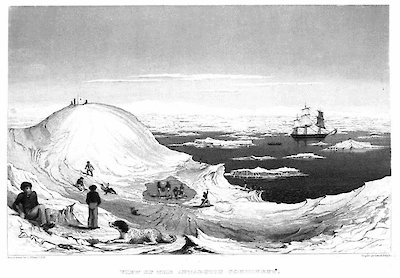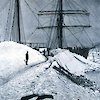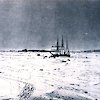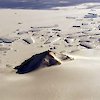Early encounters
In mid-February 1840, Charles Wilkes, commander of the United States Exploring Expedition, was nearing the end of an epic journey along the East Antarctic coast when on 16 February he and the men of USS Vincennes encountered the formidable seaward face of a large ice shelf. About to bid farewell to Antarctic waters, Wilkes gave to the region the name ‘Termination Land’.
During February 1840 Wilkes let some of his crew land on a large iceberg to collect water. The men spent several hours sliding down hummocks on the Berg! One week later, on 21 February, Wilkes and his party became the first to sight what Mawson later called the Shackleton Ice Shelf.
The expedition led by Wilkes was a classic national exploring venture, matching those of Cook, Bellingshausen and Dumont d’Urville. A British oceanographic voyage of the early 1870s was of a similar grand scale. In the summer of 1873–74, the Challenger expedition made its only foray into Antarctic waters, which included a near-fatal collision with an iceberg northwest of Shackleton Ice Shelf.
In February 1902, Eric von Drygalski led the German Antarctic Expedition into the seas not far to the west of Wilkes’s last Antarctic landfall. There he discovered an extinct volcanic cone which he named ‘Gaussberg’, in honour of his expedition’s ship and the great German mathematician after whom the ship was named, Carl Friedrich Gauss.
The men of Gauss spent nearly a year beset in the pack ice around 90°E, just off the East Antarctic coast. A party from the ship reached the land (which they named for their Kaiser, Wilhelm II) and Drygalski made one of the first balloon ascents in Antarctica. The ship was finally freed when the men sprinkled the sea ice with ship’s refuse and soot, weakening it by causing it to absorb more heat from the sun.




